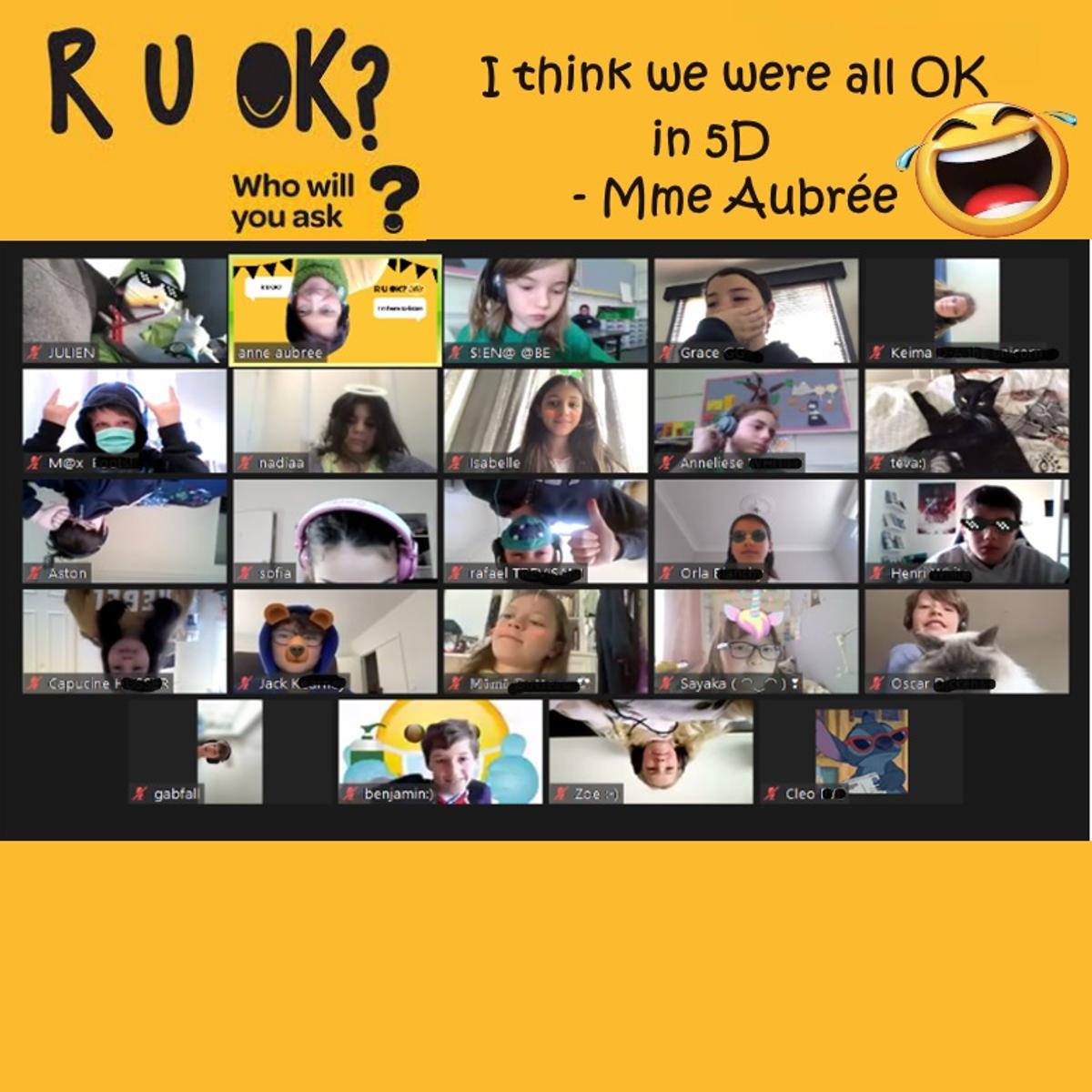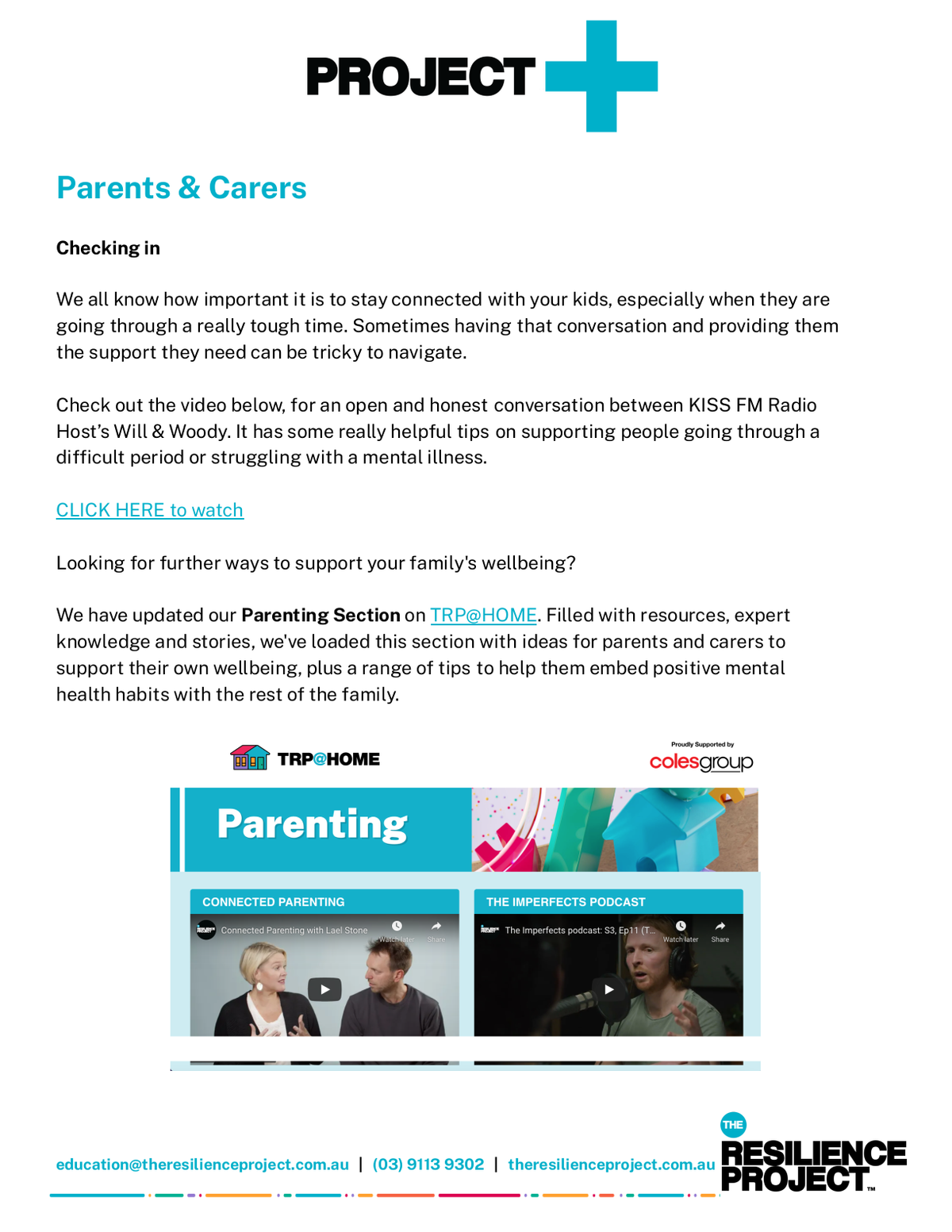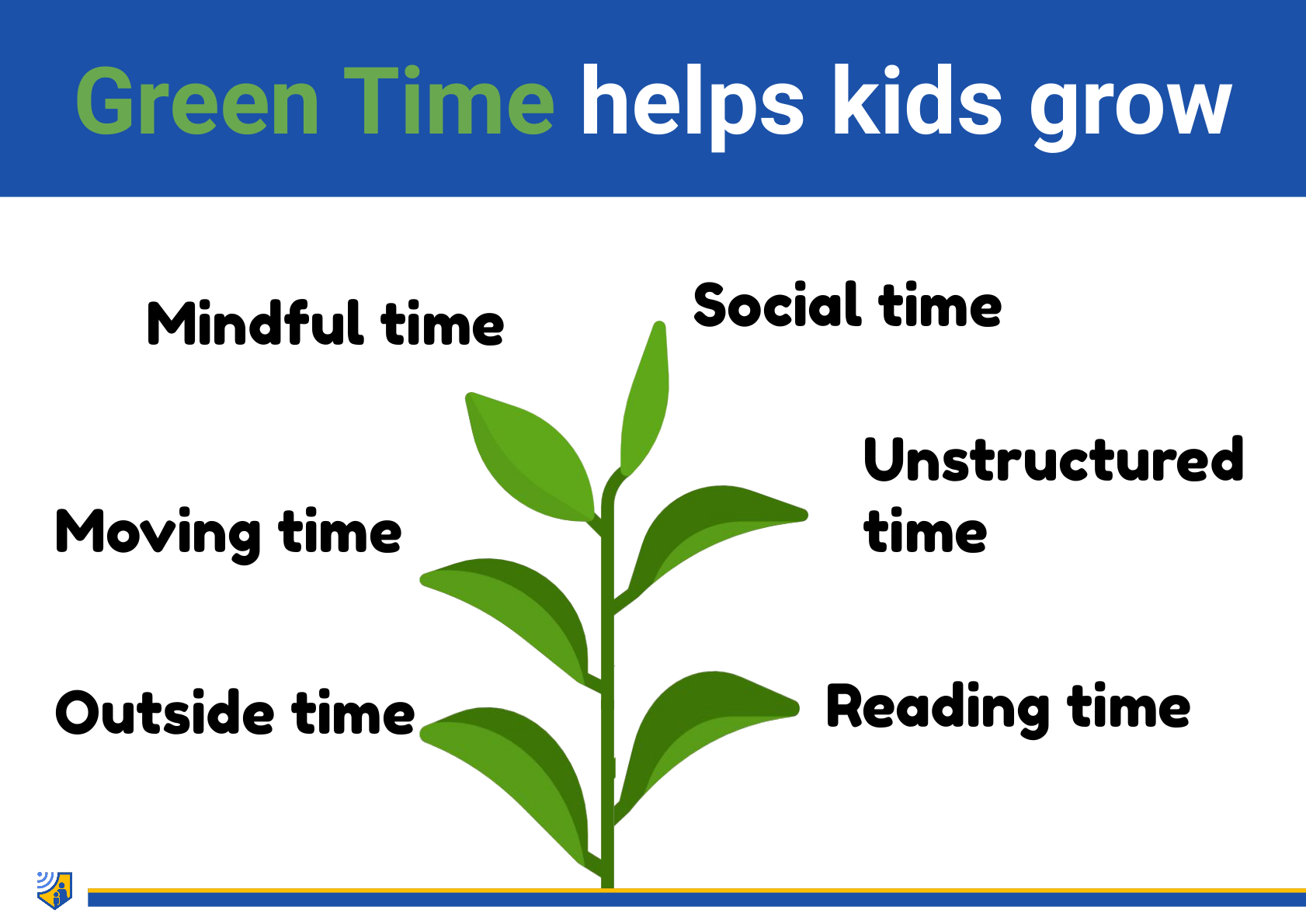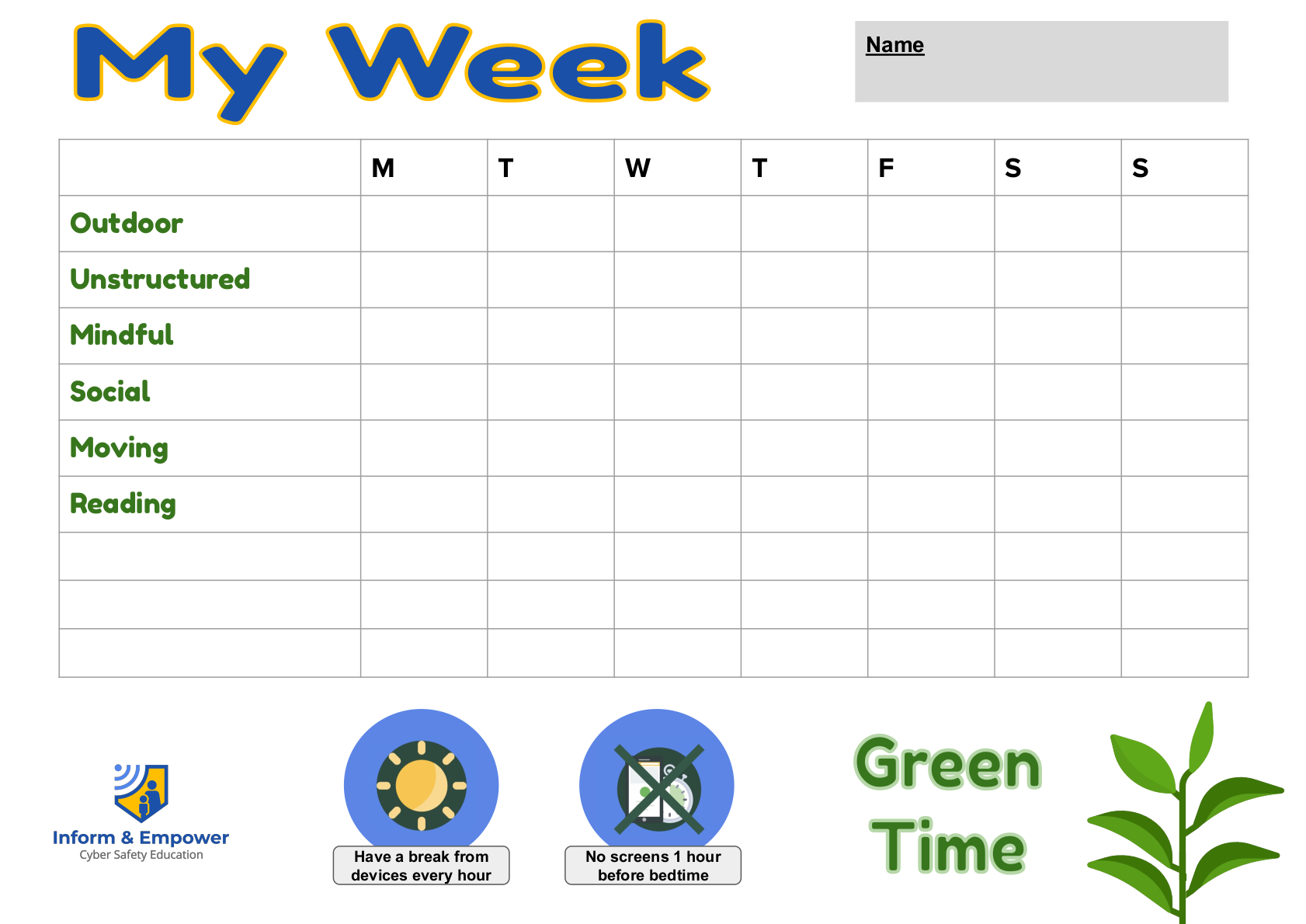Wellbeing,

R U OK?
5D
The Resilience Project.
Green Time.
Some resources from Inform and Empower (Cyber Safety Education)
https://www.informandempower.com.au/
World Colour Blindness Awareness Day
6th September 2021
What is Colour Blindness (Colour vision deficiency)?
Colour blindness affects approximately 1 in 12 (8%) boys and 1 in 200 (0.5%) girls, and worldwide there are approximately 300 million colour blind people. The most common cause of the condition is genetic and is inherited from the mother. Most colour-blind people are able to see things as clearly as other people, but they are unable to fully see red, green or blue light (or in very rare instances any colour at all).
The most common form of colour blindness is known as ‘red/green colour blindness’ and this means that it is easy for them to confuse/mix up colours which have some red or green part of the whole colour. For example, blue and purple are difficult to distinguish because they cannot see the red element of the purple. These problems can arise across the whole colour spectrum, affecting all reds, greens, oranges, browns, purples, pinks and greys. Even black can be confused as dark green or dark blue. This photo shows an example of normal colour vision vs what someone with red/green colour blindness can see:
Alfie (Class 1E) A different view of the world:
Alfie has a type of colour blindness called Protanopia. This means he is not able to perceive any red light. He is more likely to confuse:-
- Black with many shades of red
- Dark brown with dark green, dark orange and dark red
- Some blues with some reds, purples and dark pinks
- Greens with some oranges
What you can do to help Alfie or other people who are colourblind:
Alfie is happy to talk about his colour-blindness, and will happily ask for help from his class mates. Some other things that you can do to help him are: label coloured items such as pens/pencils, use black markers (not green and red) on the white board, use bibs vs non bibs in team sports, not use the traditional traffic light systems for correct vs incorrect or hard vs easy e.g. red for incorrect/hard and green for correct/easy.
How to recognise if you/ your child may be colourblind:
Sadly, many people are not diagnosed with colour-blindness until they reach adolescence or adulthood. This means they will have struggled through school and are likely to have felt much confusion and embarrassment, and therefore not have had the opportunity to learn to full capacity. This short video gives an insight into how someone might feel before they realise, they have colour-blindness:
Some signs to look out for include inappropriate colour choices when drawing/colouring, holding back in team sports (team colours might appear the same, balls, beanbags, cones, line markings seem to disappear against their background), mistakes in use of colour names between French and English (or other languages).
Alfie’s parents recognised that Alfie wasn’t able to distinguish between colours from a young age; he couldn’t tell the difference between pureed food as a baby, he would always ask them to choose colours for the drawings they did together, he didn’t really understand songs about colour e.g. the Rainbow song, but on the plus side they’ve recently discovered he has a very good sense of smell (presumably to make up for the loss of another sense)!
Where to go for more information:
The first place to go is your local optician. They can offer a test (often free with Medicare), which will give them an indication as to whether you/ your child is colour blind. They can then refer you to an eye specialist, who can confirm the type and severity of the colour blindness. A really good source of information is the following website:





